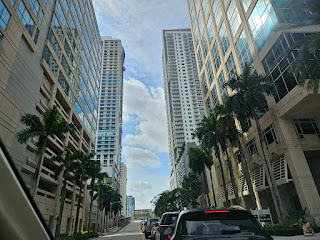By Jane Feehan
A popular club with live entertainment and flashy customers, Bocaccio’s was similar to many late-night venues in the Fort Lauderdale area during the 1970s.
Bocaccio’s in Oakland Park was developed by Morton Brown who opened its
doors in February 1975 after several delays. It featured live music, dancing and
prime rib dinners in an atmosphere described as “gaudy.” Membership cards—costing nothing—were
distributed with the purpose of controlling who came into the late-night supper
club. It was, after all, the early days of cocaine-fueled entertainment and business
deals.
Evidently membership cards did not keep all out.
Less than a year after opening, four staffers, including a
manager, 27 years old, bookkeeper, 35 and two maids, 27 and 31 were found
missing in the morning of Dec. 2. Also
missing: about $5,000 in cash as well as some non-negotiable securities. Desk
drawers had been ransacked.
The case of the missing staffers commanded headlines across the nation as possible
kidnappings until Dec. 8. Their bullet-ridden bodies were discovered by
three brothers hunting in west Sunrise fields. The bodies lay not far off a
highway in this Broward County town.
Several law enforcement agencies, including the FBI, were
involved. The case also included an informant, suspects in jail for armed
robbery, a Las Vegas trip, a cocktail waitress thought to have landed a job at
the club to see what police knew, cocaine stories and even the efforts of Dutch
psychic Peter Hurkos. All proved to be file fodder for dead-end leads. It was
thought the case would be solved quickly. It remains unsolved and mostly forgotten to this
day.
Did any leads focus on club construction delays?
Morty Brown sold the club soon after the murders but continued
with other nightclub endeavors. Bocaccio’s, located at 1421 East Oakland Park
Boulevard sat down the street from the Players Club. The “gaudy” Bocaccio’s
address was later occupied by a roster of clubs, including Studio 51, Angelo’s
Alley, The Front Page, and much later, Lip’s.
If you have any information on the Bocaccio's case, call the Broward Sheriff's Office at 954-493-TIPS or 954-493-8477.
Sources:
Fort Lauderdale News, Dec. 6, 1974
Fort Lauderdale News, Feb. 20,1975
Fort Lauderdale News, March 25, 1975
Fort Lauderdale News, Dec. 2, 1975
Fort Lauderdale News, Dec. 8, 1975
Fort Lauderdale News, April 18, 1976
Fort Lauderdale News, April 9, 1978
Fort Lauderdale News, Dec. 1, 1978
Fort Lauderdale News, Feb. 10, 1986
Fort Lauderdale News, May 24, 1987



















